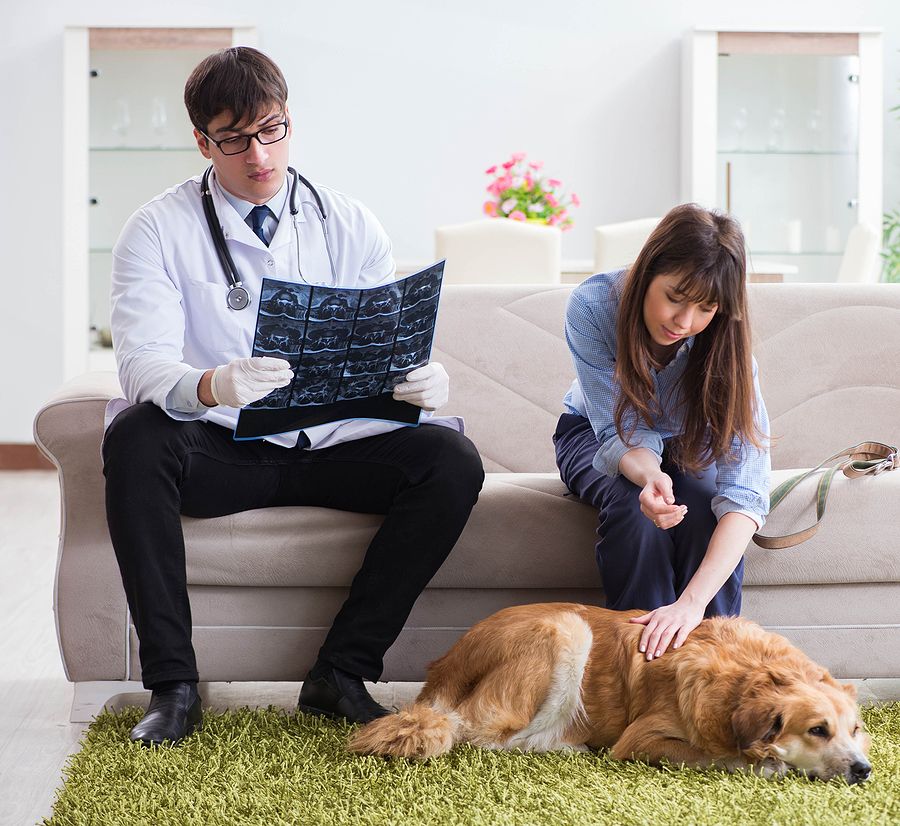6 Misconceptions About Cancer In Dogs
With today's wealth of information available right at our hands, it is easy for misleading or false information to spread. Sometimes, that misinformation can be dangerous. For our purposes, we will be talking about some of the misconceptions people have about cancer in dogs. Though sad, it is a worthwhile subject, as an estimated 25% of dogs will get cancer at some point in their life. It is a possibility that none of us want to face, but it is essential to be educated so that if your dog winds up with cancer, you will have a better idea of how to handle it.

Here are six misconceptions about cancer in dogs.
1. If your dog has been diagnosed with cancer but seems fine, it's okay to wait to start treatment.
If you are wondering how long can a dog live with cancer without treatment, the answer is that it's better not to find out. As with all cancers in pets and humans, the best possible outcome comes with early detection and treatment. Both surgery and chemotherapy are more effective in the earlier stages of the disease. This is why ensuring your pet has annual checkups with your vet is good.
2. Young dogs don't get cancer.
Old dogs are more likely to get cancer than young dogs, but it does not mean they are immune to the disease. Lymphoma and osteosarcoma are found in dogs under the age of 2. Rhabdomyosarcoma, neuroblastoma, and nephroblastoma are some of the most common tumors in younger dogs. These cancers are generally aggressive, and early detection is critical for a good prognosis.
3. Chemo will be too brutal for my dog to handle.
This is interesting because it goes against everything we know about chemotherapy in humans. Chemotherapy for dogs, at worst, should leave them feeling like they've just been a bit under the weather, as opposed to the harsh side effects we hear about in humans. This is because dogs are given much lower doses, which does not affect them as much. It is estimated that only 10% will experience adverse side effects with chemotherapy.
4. You can tell if a tumor is cancerous by looking at it.
Some forms of cancer, such as melanoma, have certain signifying features. Still, even an experienced oncologist will have to run tests to see if a lump or a tumor is cancerous. That is why it is crucial to adhere to a more cautious approach to your dog and the bumps on its skin. If you notice a new growth, it is always good to consult your vet. You might not think it is a big deal, but then the question pops into your head: what percentage of dog tumors are cancerous? There is no solid number, but the estimate is between 20% and 40%.
5. My dog is too old to be treated for cancer.
There is no such thing as a dog being too old to be treated for cancer. Because it is more common for older dogs to develop cancer, most cancer treatments are made precisely with age in mind. An experienced vet will know the best practices for older dogs, such as when to avoid surgery or how to adjust treatments to keep your dog as comfortable as possible.
6. Cancer is a death sentence for dogs.
Treatments have come a long way, and by no means is a cancer diagnosis a death sentence for your dog. Like humans, your dog could have an excellent prognosis if cancer is detected early enough and treated quickly. In fact, treatments might be minimal with some cancers if caught early enough.
Like in humans, some cancers are more deadly than others for dogs. While it is easy to be frightened by a diagnosis, there is a good chance that treatment will allow your dog to live a long and wonderful life.
If you want to know more about cancer in dogs, such as the most common cancer in dogs, please contact Forever Vets today.


